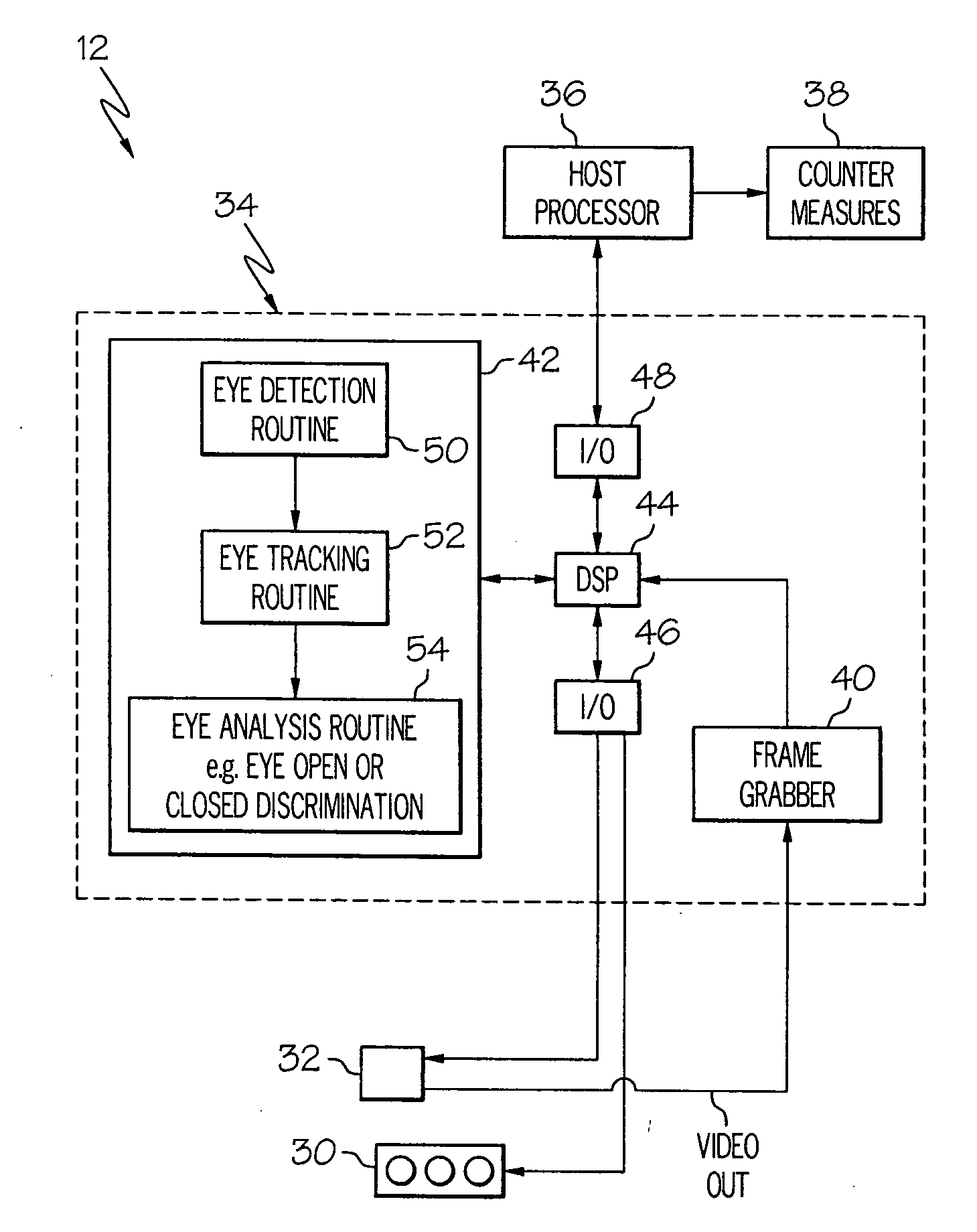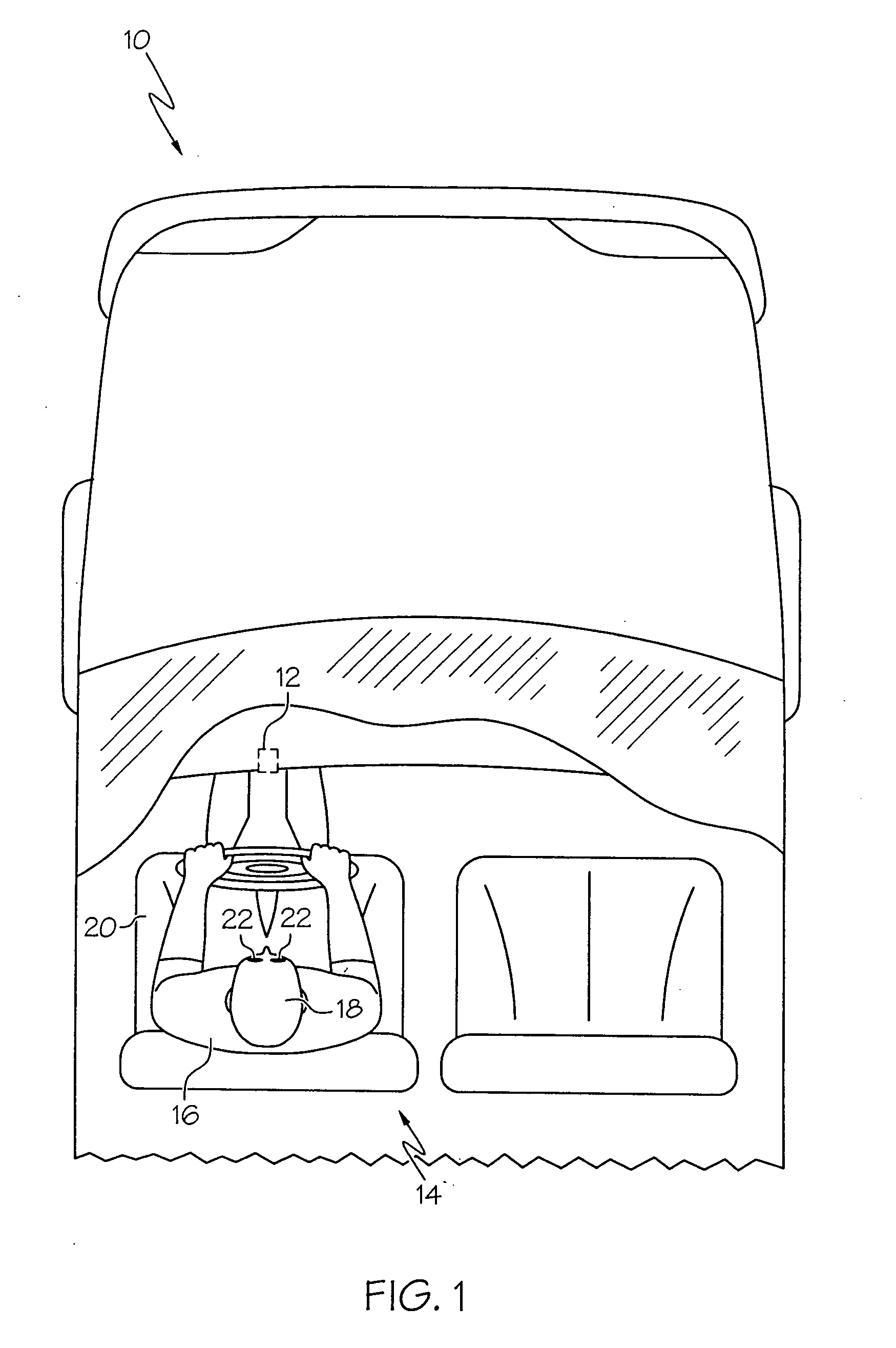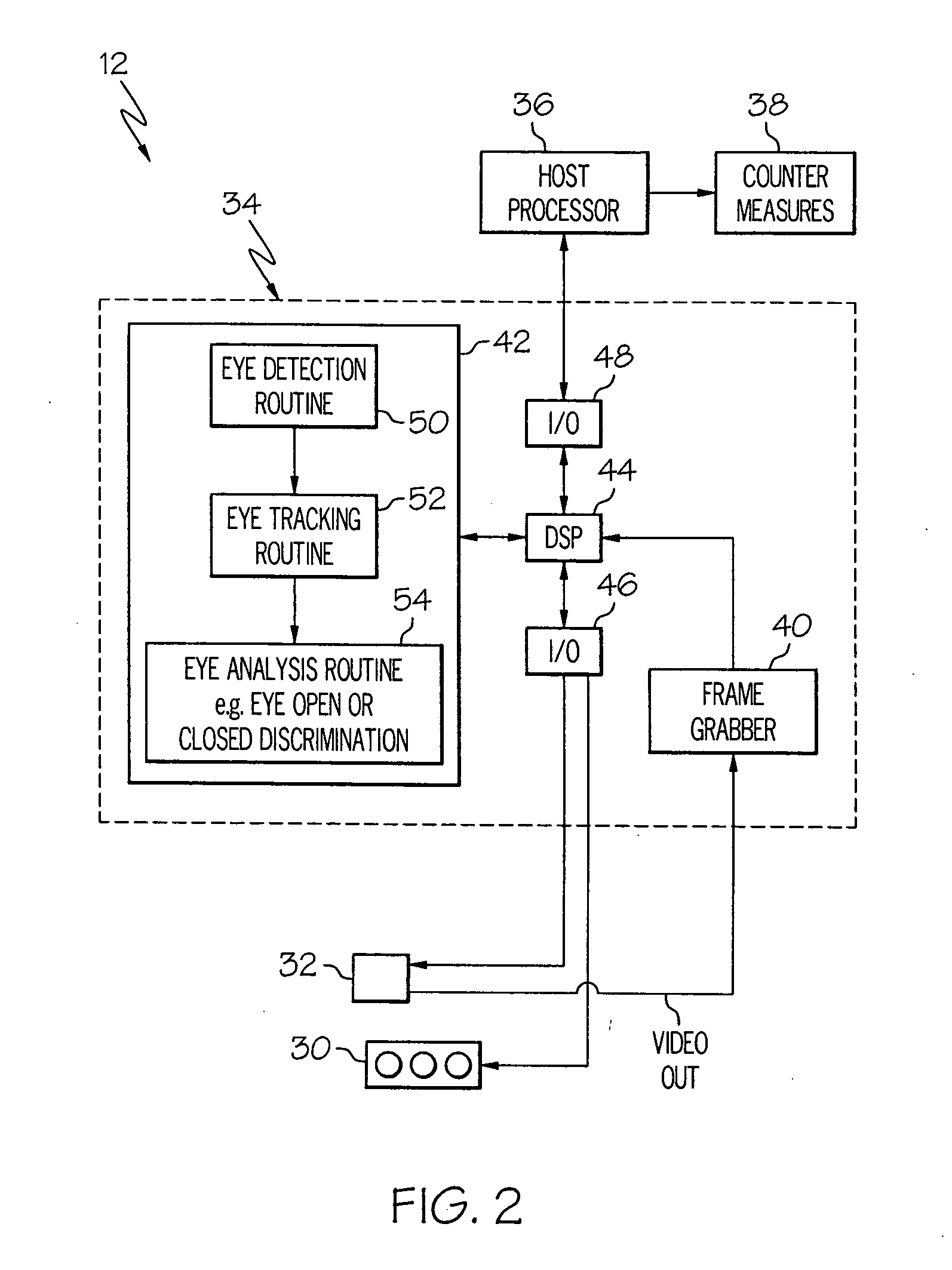Method of tracking a human eye in a video image
- Summary
- Abstract
- Description
- Claims
- Application Information
AI Technical Summary
Benefits of technology
Problems solved by technology
Method used
Image
Examples
Embodiment Construction
[0016]The method of the present invention is disclosed in the context of a system that monitors a driver of a motor vehicle. However, it will be recognized that the method of this invention is equally applicable to other vision systems that detect and track eye movement, whether vehicular or non-vehicular, and to systems that detect and track other types of features or targets.
[0017]Referring to the drawings, and particularly to FIG. 1, the reference numeral 10 generally designates a motor vehicle equipped with an eye monitoring apparatus 12 according to the present invention. In the illustration of FIG. 1, the apparatus 12 is mounted in the passenger compartment 14 forward of the driver 16 in a location that affords an unobstructed view of the driver's face 18 when the driver 16 is reposed on the seat 20, taking into account differences in driver height and orientation. In general, the eye monitoring apparatus 12 produces a series of video images of the driver's face 18, and execut...
PUM
 Login to View More
Login to View More Abstract
Description
Claims
Application Information
 Login to View More
Login to View More - R&D
- Intellectual Property
- Life Sciences
- Materials
- Tech Scout
- Unparalleled Data Quality
- Higher Quality Content
- 60% Fewer Hallucinations
Browse by: Latest US Patents, China's latest patents, Technical Efficacy Thesaurus, Application Domain, Technology Topic, Popular Technical Reports.
© 2025 PatSnap. All rights reserved.Legal|Privacy policy|Modern Slavery Act Transparency Statement|Sitemap|About US| Contact US: help@patsnap.com



